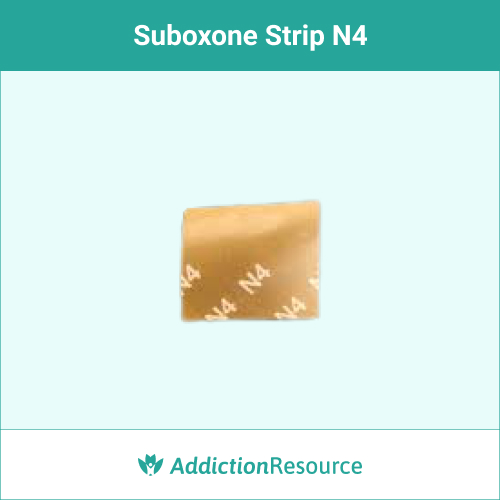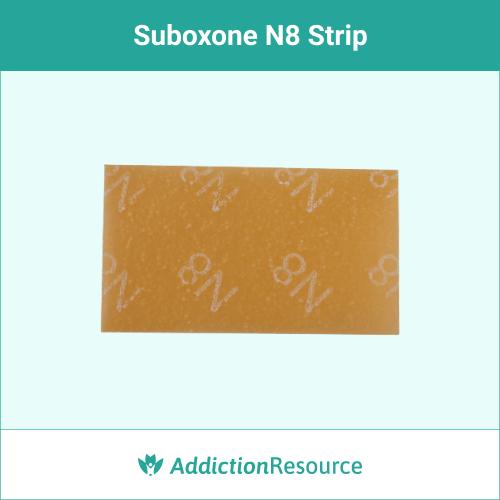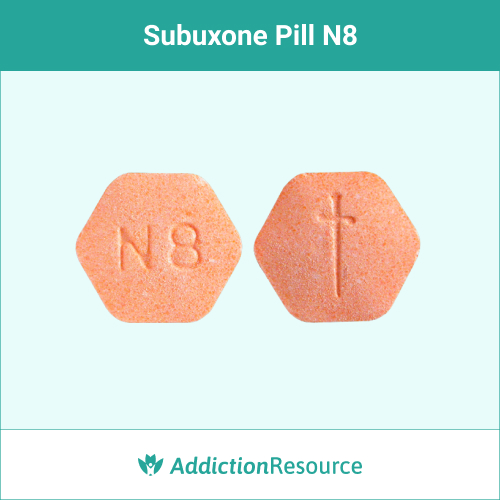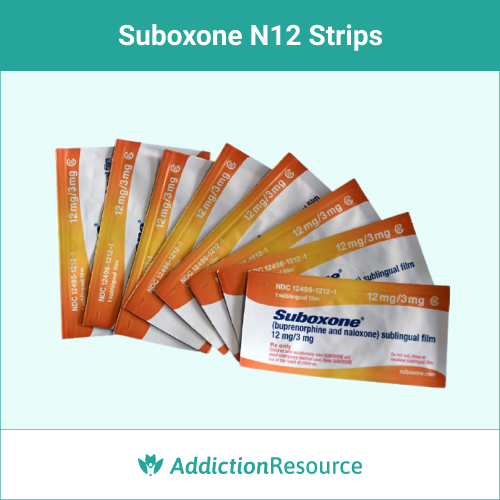Suboxone, recognized by its distinctive orange hexagonal tablets, stands as a cornerstone for addiction treatment and recovery.
Specifically designed to address opioid dependence, Suboxone combines two active ingredients: buprenorphine, a partial opioid agonist, and naloxone, an opioid antagonist. This unique formulation contributes significantly to harm reduction and facilitates a smoother transition for individuals navigating recovery from opioid withdrawal.
Prescribed as part of medication-assisted treatment (MAT) programs, Suboxone plays a crucial role in minimizing withdrawal symptoms and cravings, aiding individuals in overcoming opioid addiction. Read on to know how to identify the Suboxone pill and its pivotal role in a life free of addiction.
Table Of Contents:
What is Suboxone?
Trade name: Suboxone®
Generic name: Buprenorphine/Naloxone
Suboxone, stands as a pharmacological ally in the battle against opioid addiction, playing a pivotal role in medication-assisted treatment (MAT) programs. Marketed under the trade name Suboxone, this medication combines two active ingredients: buprenorphine and naloxone.
- Buprenorphine: A partial opioid agonist is the primary component in Suboxone.
- Naloxone: An opioid antagonist serves as an additional component in Suboxone. Its inclusion is crucial in preventing misuse.
The combination of buprenorphine and naloxone in Suboxone contributes to a balanced and controlled approach to opioid addiction treatment. Buprenorphine’s partial agonist activity provides relief from cravings and withdrawal symptoms, while naloxone blocks the effects of opioids.
With a half-life of approximately 24-48 hours, the orange suboxone pill is typically administered as a sublingual film or tablet, meant to dissolve under the tongue. This route of administration enhances the medication’s bioavailability and allows for a gradual release, promoting sustained therapeutic effects.
Why Suboxone Comes in Different Pill Presentations?
Different kinds of suboxone pill presentations serve specific purposes, ranging from dosage flexibility to accommodating individual needs and preferences.
Dosage Flexibility
Suboxone is available in various strengths, such as 2 mg/0.5 mg, 4 mg/1 mg, 8 mg/2 mg, and higher. This allows healthcare professionals to prescribe the most appropriate dosage based on the severity of opioid dependence.
Tapering Strategies
Different Suboxone pill presentations provide options for gradual dose reductions during the tapering phase of treatment. Tapering involves systematically decreasing the dosage over time, helping individuals transition to lower levels of opioid medication.
Individualized Treatment Plans
The diversity in Suboxone presentations allows healthcare providers to create individualized treatment plans that consider factors such as the patient’s history of opioid use, response to treatment and specific needs.
Phased Treatment
Suboxone is often used in different phases of addiction treatment, including induction, stabilization and maintenance. The availability of various pill presentations supports a smooth transition between these phases.
Reducing Side Effects
Some individuals may experience side effects or discomfort with higher doses of medication. Having lower-strength Suboxone pill presentations enables healthcare providers to start with a lower dosage and titrate upward as needed.
10 Suboxone Presentations
To help you rule out any confusion when administering or taking Suboxone, here are details about specific drug variations:
Suboxone Strip N2 mg/0.5 mg

- Dosage: 2 mg buprenorphine / 0.5 mg naloxone
- Appearance: Thin, rectangular orange film
- Imprint: White “N2”
Suboxone Strip N4 mg/1 mg

- Dosage: 4 mg buprenorphine / 1 mg naloxone
- Appearance: Rectangular orange film
- Imprint: White “N4”
Suboxone Film N8 mg/2 mg

- Dosage: 8 mg buprenorphine / 2 mg naloxone
- Appearance: Rectangular orange film
- Imprint: White “N8”
Suboxone Pill N2 mg/0.5 mg:

- Dosage: 2 mg buprenorphine / 0.5 mg naloxone
- Appearance: Hexagonal orange tablet, 7.00 mm in size
- Imprint: “N2”
Suboxone Tablet 4 mg/1 mg
- Dosage: 4 mg buprenorphine / 1 mg naloxone
- Appearance: Hexagonal orange tablet
- Imprint: “N4”
Suboxone Tablet N8 mg/2 mg:

- Dosage: 8 mg buprenorphine / 2 mg naloxone
- Appearance: Hexagonal orange tablet
- Imprint: “N8” on one side
Suboxone Film 12 mg/3 mg:

- Dosage: 12 mg buprenorphine / 3 mg naloxone
- Appearance: Rectangular orange film
- Imprint: “N12”
Suboxone White B2 Pill

- Appearance: Oval and white
- Dosage: 2 mg buprenorphine / 0.5 mg naloxone, 10mm in size
- Imprint: “B2”
Suboxone White B8 Pill

- Appearance: Oval and white
- Dosage: 8 mg buprenorphine
- Imprint: “B8”
Suboxone Pill Orange 54 375

- Appearance: Round, speckled-peach to peach or orange
- Dosage: 8 mg buprenorphine / 2 mg naloxone
- Imprint: “54 375”
What Is the Most Effective Type of Suboxone?
The introduction of sublingual strips for buprenorphine administration has significantly enhanced the medication’s ease of use.
This innovative delivery method facilitates quicker dissolution under the tongue than traditional sublingual tablets. So, if you are wondering, ‘Do suboxone pills work better than strips?’ The answer is that although both presentations contain the same compounds, the strip does allow for more efficient supervision by healthcare professionals.
Suboxone sublingual strips excel in preventing abuse compared to tablets. Their adhesive nature to the mucosal membrane makes removal difficult until fully dissolved, minimizing the risk of tampering. These strips often contain higher doses, enhancing their effectiveness in managing opioid dependence. If you are wondering how many mg is a suboxone strip, it comes in four strengths:
- 2 milligrams (mg) buprenorphine/0.5 mg naloxone
- 4 mg buprenorphine/1 mg naloxone
- 8 mg buprenorphine/2 mg naloxone
- 12 mg buprenorphine/3 mg naloxone
Suboxone Pill and Strips Side Effects
Suboxone may cause various side effects.
It’s essential to note that not everyone will experience these side effects, and their severity can vary. If you are prescribed a Suboxone round orange pill, discussing any concerns or observed side effects with your healthcare provider is crucial.
Some common and less common side effects associated with Suboxone:
Common Suboxone Side Effects
- Nausea and vomiting: Some individuals may experience nausea or vomiting, especially when starting Suboxone treatment.
- Headache: Headaches are a common side effect and are usually mild.
- Constipation: Opioid medications can cause constipation. Staying hydrated and including fiber in your diet may help alleviate this.
- Insomnia: Difficulty sleeping or insomnia may occur in some individuals.
- Sweating: Excessive sweating, often called diaphoresis, can be a side effect of the Suboxone pill and strips.
- Dizziness: Some people may experience dizziness or lightheadedness.
- Mouth numbness: Suboxone’s sublingual administration may lead to numbness or tingling in the mouth.
Less Common Suboxone Side Effects
- Allergic reactions: In rare cases, individuals may experience allergic reactions such as rash, itching, or swelling, especially on the face, tongue, or throat.
- Respiratory problems: Suboxone, like other opioids, can affect respiratory function. Seek medical attention if you experience difficulty breathing.
- Liver issues: Suboxone may affect liver function in some individuals. Regular monitoring may be required, especially for those with pre-existing liver conditions.
- Hormonal changes: Opioids may influence hormone levels and potentially cause irregular menstrual cycles.
- Depression: Some individuals may experience changes in mood, including symptoms of depression.
- Coordination issues: The Suboxone pill can affect coordination and increase the risk of falls, especially at higher doses.
Warning: 4 Ways to Identify Authentic Suboxone Medication
Ensuring the authenticity of Suboxone is vital for effective treatment and patient safety.
Although Suboxone is well-known by its brand name, it is also sold as Zubsolv and Cassipa, with Bunavail now discontinued. Exercise caution when purchasing Suboxone to avoid counterfeit drugs. Obtain it exclusively from reputable pharmacies with a valid prescription.
Here are 4 key measures to help identify genuine Suboxones:
- Physical characteristics: Look for dissimilarities in size, shape, color and uniformity. Counterfeit tablets and strips may exhibit variations in imprint depth compared to authentic ones.
- Imprints and numbers: The authentic Suboxone pill will have clear, deeply stamped numbers and imprints. Counterfeit versions may feature imprints that differ from the originals.
- Drug pill identifier by imprint code: Use a reliable drug pill identifier to cross-reference imprints and verify authenticity.
- Packaging details: Examine the packaging for discrepancies such as unusual fonts, print color, expiry dates, manufacturer ID, batch numbers and spelling mistakes.
Safely Managing Suboxone Medication
When using Suboxone, adhering to prescribed guidelines is crucial for a safe and effective treatment experience. Typically taken once daily, the medication should be placed under the tongue for 5 to 10 minutes, allowing complete dissolution. Avoid swallowing or chewing the Suboxone pill.
Seeking professional help from medical experts in a rehabilitation center is paramount. Addiction recovery is a journey that is nothing to be ashamed of.
If you or someone you know is struggling, don’t hesitate to seek the support and treatment needed.
People Also Ask
Is Suboxone considered a narcotic?
Yes, Suboxone is considered a narcotic. It contains buprenorphine, an opioid, which makes it subject to the legal classification as a narcotic.
Are Suboxone tablets still available?
No. The brand-name version was discontinued in 2012, with only generic alternatives currently accessible.
Does Suboxone come in a pill form?
Yes, Suboxone is available in pill form. It is commonly found in various formulations, including strips and sublingual tablets for the treatment of opioid dependence.
Hope Without Commitment
Find the best treatment options. Call our free and confidential helpline
Most private insurances accepted
Page Sources
- Dydyk, A. M. (2023, July 21). Opioid use disorder. StatPearls - NCBI Bookshelf. - Retrieved on february 02, 2024
- Velander, J. R. (2018). Suboxone: Rationale, Science, Misconceptions. The Ochsner Journal, 18(1), 23-29. - Retrieved on february 02, 2024
- Fischer, A., Jönsson, M., & Hjelmström, P. (2013). Pharmaceutical and pharmacokinetic characterization of a novel sublingual buprenorphine/naloxone tablet formulation in healthy volunteers. Drug Development and Industrial Pharmacy, 41(1), 79–84. - Retrieved on february 02, 2024
- Kumar, R. (2023, November 30). Buprenorphine. StatPearls - NCBI Bookshelf. - Retrieved on february 02, 2024

 Authored by
Authored by  Reviewed by
Reviewed by 

